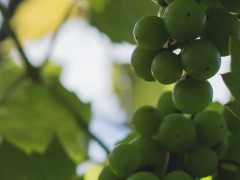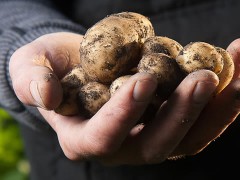Over at Politics of the Plate, Barry Estabrook posts about the lives of two contrasting Texas cattle ranches – one, an industrial CAFO, the other, a free range operation just a short distance away. There is an interesting food law issue lurking behind the cowboy boots, Texas drawls, and pastoral charm. Piggy-backing on Estabrook’s juxtaposition a bit, both ranchers do business under legal regimes that are as different as their agricultural methods. The difference is important to note because it creates an artificial price disparity between their products. Beef price is discussed in the article, but not the policy behind it that creates the market distortions these two ranchers have to deal with.
Food law and federal agricultural policy disproportionately favor large producers who operate Concentrated Animal Feeding Operations. Federal law helps other big producers to distort the cost of their agricultural production by allowing them to sequester lakes of animal waste on their land, which are absolutely inevitable byproducts of CAFO production. This regulatory policy allows the CAFO producer in the Estabrook post to hide some of their production costs. For a multitude of reasons, small scale farmers and ranchers do not share these economic benefits and are therefore held hostage to inelastic costs of production which they must reflect in their retail pricing.
CAFOs definitely create efficiencies in agriculture. Cramming many animals in a small lot most obviously saves acreage, and land is expensive. Putting all the animals in one place allows ranchers to stuff cattle full of cheap, subsidized commodity crops like soybeans and corn. It is easier to apply veterinary care to CAFO animals and they require less labor to oversee during their development.
But in order to achieve these efficiencies, CAFOs must contend with the salient problem of waste concentration. Thousands of cattle confined to a small lot produce a volume of waste that overloads the ability of the natural environment to recuperate on its own. CAFO operators need to scoop it all up and put it someplace. Federal law allows for these waste products to be sequestered into lagoons adjacent to farms and fields. But for these lakes of animal waste, all of the other efficiencies created by CAFO production would be obviated.
If properly built and maintained, the lagoons are statistically speaking a relatively safe environmental risk. (When they do occasionally burst their seams due to flooding or poor maintenance, the results are catastrophic.) Even viewed in the best possible light, a CAFO’s lake of sequestered waste is a way to indefinitely postpone one of the biggest costs of concentrated production. This cost of environmental degradation does not make its way down to the sticker price because the law allows wastes to be cheaply bottled-up instead of dealt with by sewage treatment or some other expensive method of disposal.
In the context of CAFO regulation, this form of agricultural exceptionalism is an insincere policy. Regulators’ intent is to get the sticker price of commodity meat to seem as low as possible without regard to production costs. Some may view CAFO policy as completely benign, such as most commodity farmers. The vast majority of supermarket consumers may be supremely indifferent to it even if made aware of its deleterious environmental consequences or its dishonesty as an agricultural ethic. But it really puts a crimp in the style of alternative producers and free-grazers like the ones discussed in the Estabrook post.
There are many ethical or logistical reasons why smaller agricultural producers cannot achieve the efficiencies of CAFO production. Individually, they lack the herd-size to create the economies of scale which are sufficient to justify the trouble. They may lack the capital to equip such a facility. Others simply find it morally abhorrent. Regardless of the reason, because they may not avail themselves of the false economies of CAFO agriculture, their products reflect the true price of meat that honestly includes all of its costs of production.
For any number of reasons, Seth Nitschke is unable to avail himself of the trade-off achieved by concentration and waste sequestration. (Judging from the article, I take it he’s morally opposed to doing so even if he could.) Raising on pasture means that Nitschke cannot cheat on his prices. All costs of production must be reflected in his price. His price seems relatively high only because his production costs are absolutely accurate. Adding to his challenge as a salesman, his price seems excessively expensive relative to the artificially low price of its commodity corollary grown across the valley using food law and policy exemptions that are available only to CAFO producers.
















